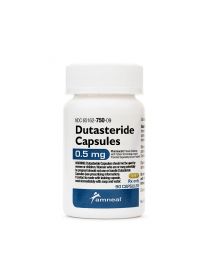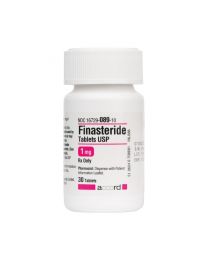- Home
- About
-
- < Products
-
- < By Brand
- Alastin Skincare
- AMP medical
- Biopelle
- CALECIM®
- CareFirst Specialty Pharmacy
- CLn Skin Care
- CO2Lift
- EltaMD
- Empower Pharmacy
- Glowbiotics
- Hillcrest Pharmacy
- HydroPeptide
- ISDIN
- Jan Marini
- Latisse
- MMSkincare
- Neocutis
- Nutrafol
- Obagi
- PCA Skin
- PHOTOZYME
- Qyksonic
- Revision Skincare
- Sente
- skinbetter science
- SkinCeuticals
- SkinMedica
- Upneeq
- VANIQA®
- Virtue Labs
-
- < By Product Type
- Acne Scarring
- Acne Treatments
- Anti-Aging
- Bath and Body
- Brightening
- Cleansers
- Eye Treatments
- Exfoliants
- Hair Care
- Hair Regrowth
- Hand Treatments
- Injectable
- Kits
- Lip Treatments
- Masks
- Moisturizers
- Neck Treatments
- Redness & Rosacea
- Retinoids & Exfoliants
- Scarring & Post-Procedure
- Thin Lashes
- Serums
- Skin Rejuvenation & Antioxidants
- Dietary Supplements
- Toners
- Sun Protection
- Contact Us
- Sign In
- Sign Up
Doxycycline is shown to have excellent absorption. Following oral administration, the drug is rapidly but almost completely absorbed in the stomach and small intestine.
$27.50
Doxycycline is a semisynthetic antibiotic of the tetracycline class derived from oxytetracycline. It is a bacteriostatic agent but can also exhibit bactericidal effects in high concentrations. Doxycycline, like other members of the tetracycline group, has a broad-spectrum activity against a wide range of gram-positive, gram-negative, and atypical organisms. The drug is also active against some protozoan pathogens. Clinically, doxycycline is a drug of choice for the management and treatment of many mild-to-moderate infectious diseases. penicillin-resistant strains of Staphylococcus aureus,56 β-lactamase-producing strains of Moraxella catarrhalis, multidrug-resistant strains of Acinetobacter baumannii and Stenotrophomonas maltophilia, and strains of organisms resistant to other tetracyclines.
Doxycycline has excellent oral availability and a low binding affinity with calcium (Ca2+) ions. Unlike other tetracyclines, however, it is more lipid-soluble and has a prolonged serum half-life. Doxycycline also has high stability in normal human serum and therapeutic drug monitoring is extremely rare. The drug is available in multiple dosage forms including tablet, capsule, syrup, oral suspension, and reconstituted powder for IV. Doxycycline, along with minocycline, can be administered irrespective of meals. The US FDA first approved doxycycline in 1967 and currently defines it as a wide therapeutic index drug. It is also included in the List of Essential Medicines by the World Health Organization as a first-choice treatment for sexually transmitted infections caused by Chlamydia trachomatis. Doxycycline primarily permeates the cells using the transcellular transport pathway and crosses over the outer cell membrane of the susceptible bacteria via hydrophilic pores. It is thought to enter the inner cytoplasmic membrane via a pH-dependent active transport system and afterward become chelate within the cytoplasm. The charged aminoacyl transfer RNA (aa-tRNA) is blocked from attaching to the ribosomal A site, yielding a cessation of RNA-dependent protein synthesis. Consequently, the aa-tRNA fails to bind with the messenger RNA-ribosome complex, causing a halt to the bacterial translation process and disruption of essential protein production. This static state eventually kills the bacteria.
Doxycycline has been shown to inhibit the apicoplast gene expression in Plasmodium falciparum late in the cell cycle. The blocking of apicoplasts leads to impaired fatty acid biosynthesis and a subsequent failure in parasite development. Doxycycline, along with minocycline and other 2nd generation tetracyclines, is a preferred antibiotic in the treatment of acne vulgaris due to its higher lipophilicity compared to other tetracyclines and lower resistance rate of P. acnes strains against cyclones. The exact mechanism(s) by which doxycycline works against acne is not fully established. It is thought to down-regulate inflammatory mediators and blocks P. acnes-derived lipase, which eventually decreases the number of lipase-producing bacteria by reducing the levels of follicular-free fatty acids.
Doxycycline is also found to be a potential agent for the inhibition of collagenase in patients with periodontitis. Collagenase breaks down the peptide bonds in collagen, which ultimately separate the gum from the tooth. In the treatment of periodontitis, subantimicrobial doses (SD) of doxycycline have shown anti-collagenolytic, matrix metalloproteases (MMPs) degrading, and cytokine down-regulating actions. SD Doxycycline, however, is too small to show a direct antimicrobial effect and thus should not be used as an antibacterial agent in patients with periodontitis. Other actions of doxycycline include preventing angiogenesis and apoptosis, promoting wound healing, and encouraging gingival fibroblast attachment.
Ribosomal protection proteins such as Tet(O), Tet(K), and Tet(M) are primarily responsible for the development of bacterial resistance to tetracyclines. These proteins employ various resistance mechanisms to prevent the activity of tetracyclines including efflux, rRNA mutations, permeability reduction, and enzymatic degradation. They inhibit tetracyclines from binding to the target ribosomal subunit and amplify the disassociation constant (Kd). These actions ultimately resume the protein synthesis by allowing the attachment of tRNA with the ribosome. Culture and susceptibility testing is therefore recommended before initiating tetracyclines.
| Brand | Empower Pharmacy |
|---|
Write Your Own Review
antibiotic
Doxycycline Hyclate 100 mg Tablet












